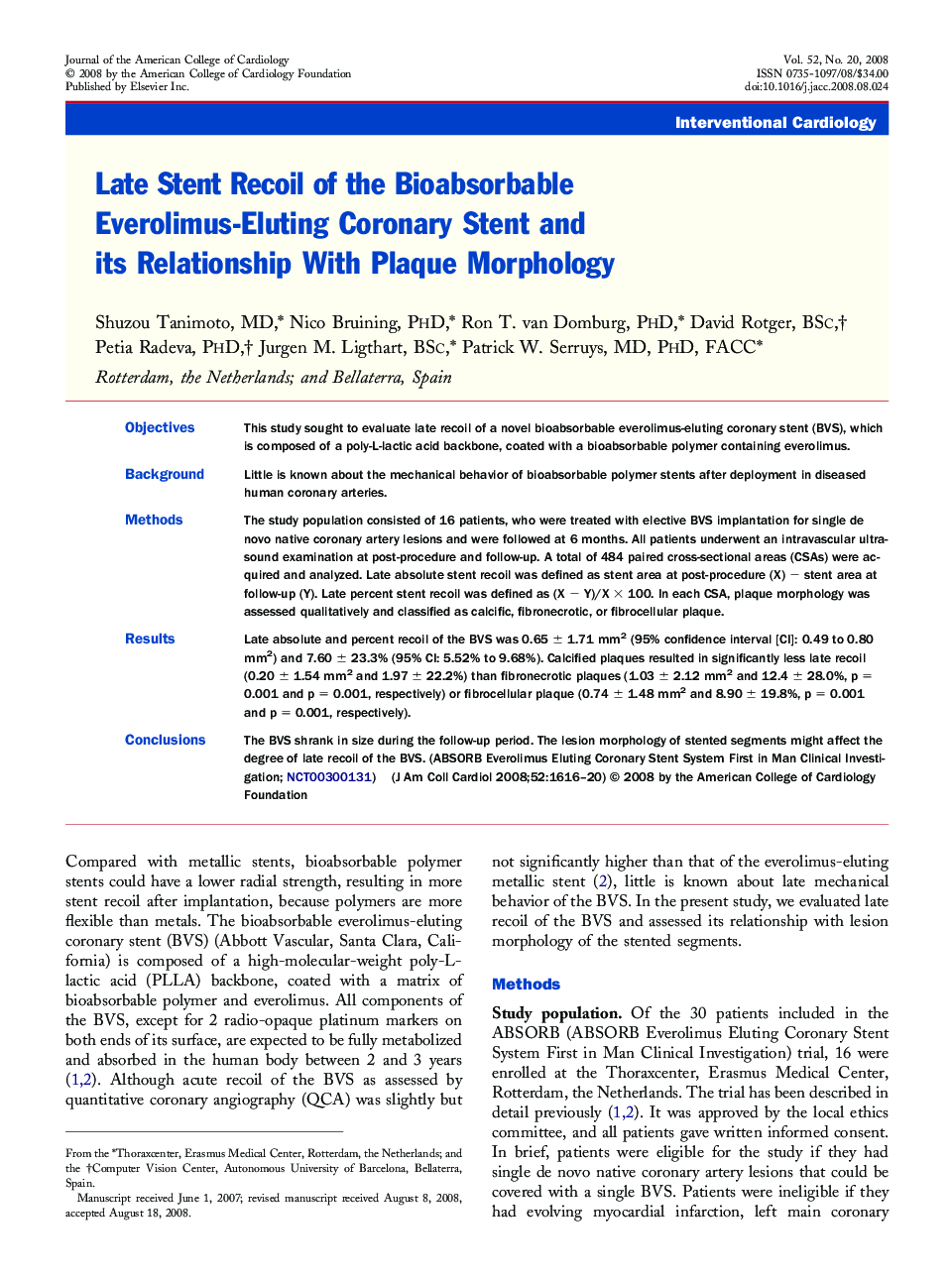| Article ID | Journal | Published Year | Pages | File Type |
|---|---|---|---|---|
| 2952251 | Journal of the American College of Cardiology | 2008 | 5 Pages |
ObjectivesThis study sought to evaluate late recoil of a novel bioabsorbable everolimus-eluting coronary stent (BVS), which is composed of a poly-L-lactic acid backbone, coated with a bioabsorbable polymer containing everolimus.BackgroundLittle is known about the mechanical behavior of bioabsorbable polymer stents after deployment in diseased human coronary arteries.MethodsThe study population consisted of 16 patients, who were treated with elective BVS implantation for single de novo native coronary artery lesions and were followed at 6 months. All patients underwent an intravascular ultrasound examination at post-procedure and follow-up. A total of 484 paired cross-sectional areas (CSAs) were acquired and analyzed. Late absolute stent recoil was defined as stent area at post-procedure (X) − stent area at follow-up (Y). Late percent stent recoil was defined as (X − Y)/X × 100. In each CSA, plaque morphology was assessed qualitatively and classified as calcific, fibronecrotic, or fibrocellular plaque.ResultsLate absolute and percent recoil of the BVS was 0.65 ± 1.71 mm2 (95% confidence interval [CI]: 0.49 to 0.80 mm2) and 7.60 ± 23.3% (95% CI: 5.52% to 9.68%). Calcified plaques resulted in significantly less late recoil (0.20 ± 1.54 mm2 and 1.97 ± 22.2%) than fibronecrotic plaques (1.03 ± 2.12 mm2 and 12.4 ± 28.0%, p = 0.001 and p = 0.001, respectively) or fibrocellular plaque (0.74 ± 1.48 mm2 and 8.90 ± 19.8%, p = 0.001 and p = 0.001, respectively).ConclusionsThe BVS shrank in size during the follow-up period. The lesion morphology of stented segments might affect the degree of late recoil of the BVS. (ABSORB Everolimus Eluting Coronary Stent System First in Man Clinical Investigation; NCT00300131)
